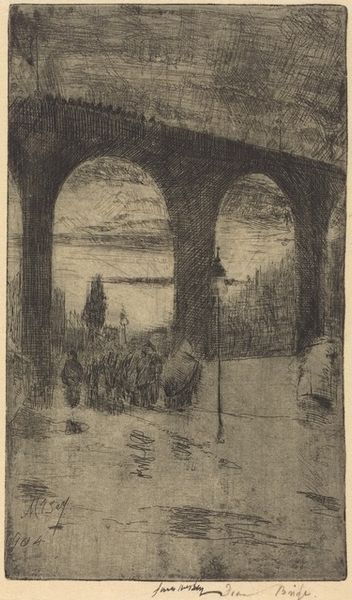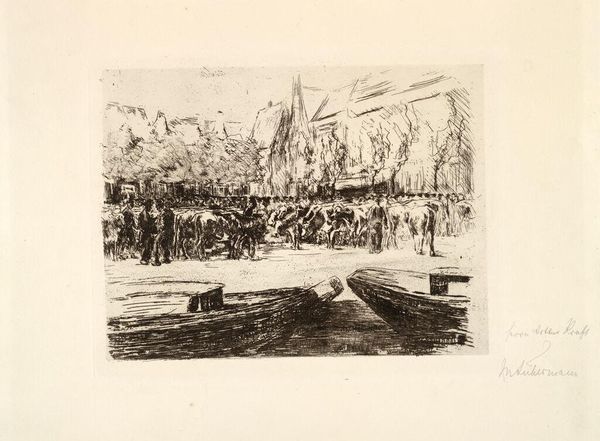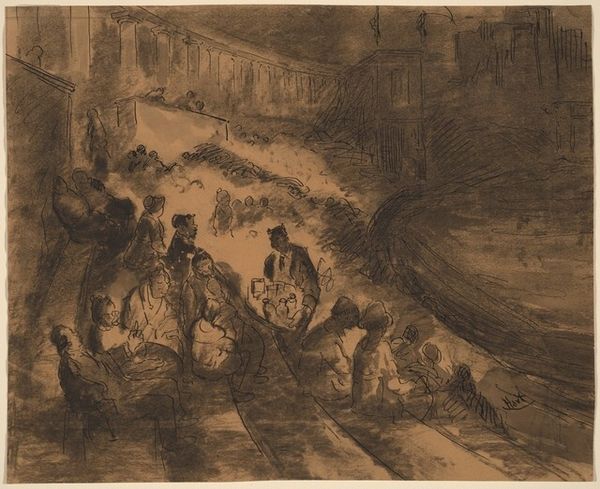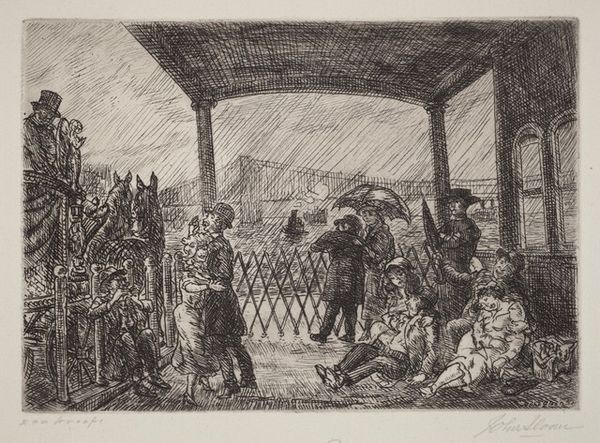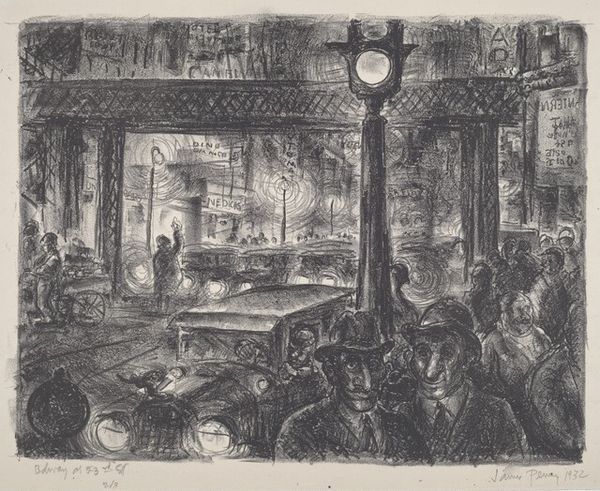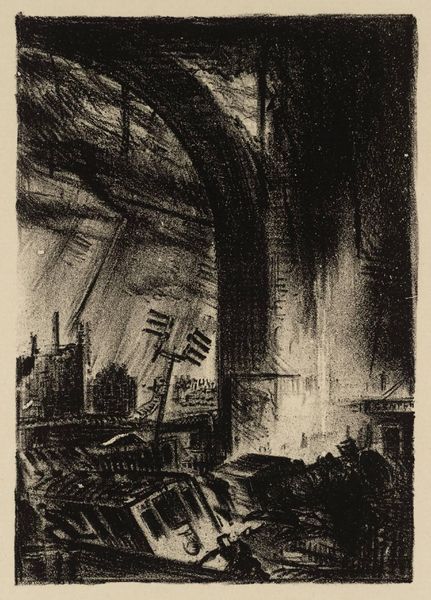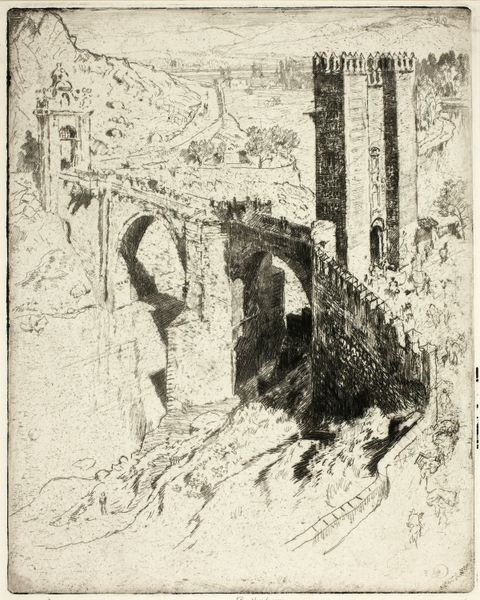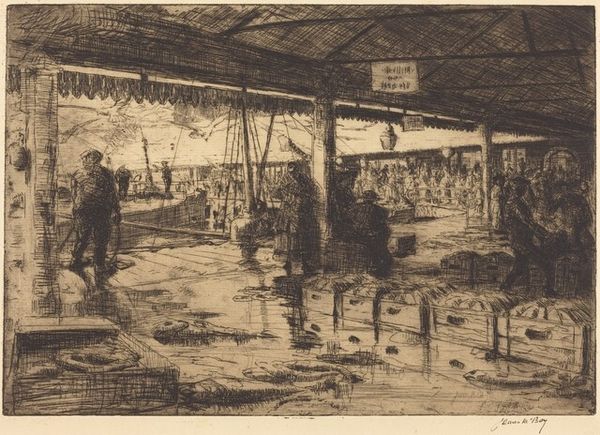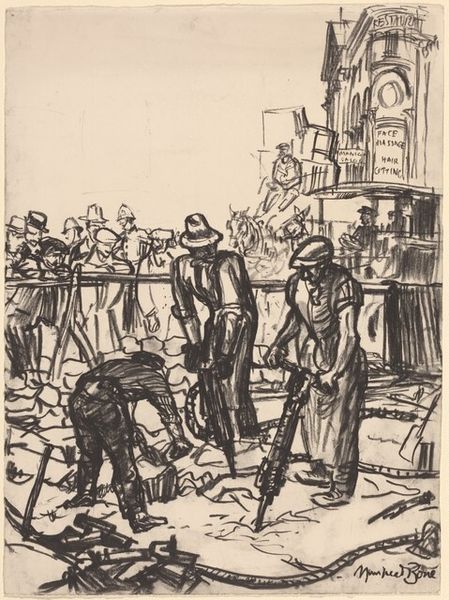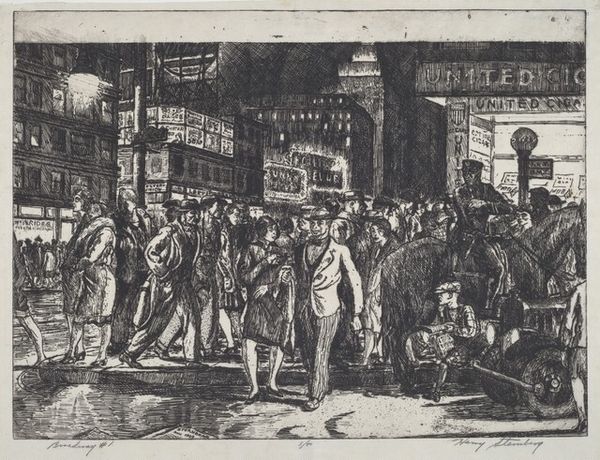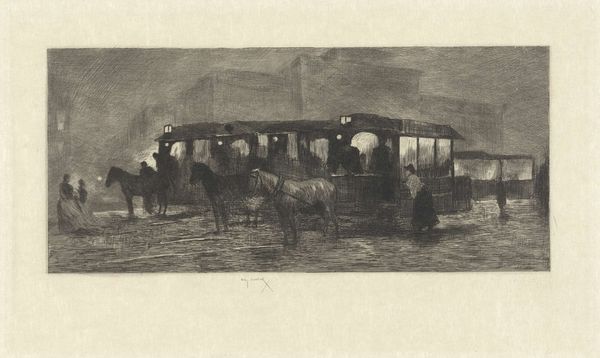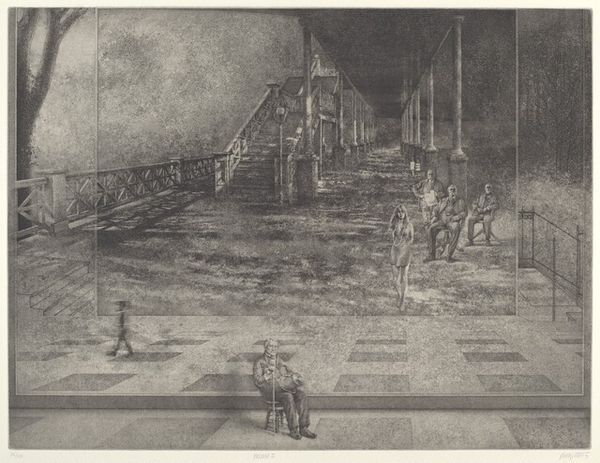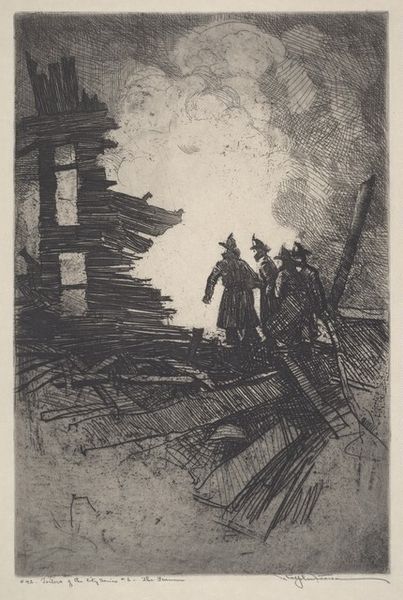
Dimensions: plate: 355 x 227 mm sheet: 427 x 305 mm
Copyright: National Gallery of Art: CC0 1.0
Curator: This etching is entitled "Toilers of the City" and was created by Ralph M. Pearson in 1908. The print showcases his interest in industry and the urban experience. Editor: The immediate impression is one of somber industry. There’s a grittiness and a weight to it. The figures are stooped, almost bowed, under something – the arch of the bridge perhaps, or maybe something more. Curator: Given the time period, Pearson was likely influenced by the Ashcan School movement, which often depicted everyday life, especially that of the working class, in urban settings. The etching technique itself allows for that gritty texture, doesn't it? Editor: Absolutely. The lines feel almost haphazard, rough. Look closely, and you’ll see many carry tools, picks, and shovels over their shoulders – traditional symbols of manual labor that evoke timeless concepts of struggle. Curator: That's an astute observation, thinking about those implements. I think it is useful to examine Pearson’s process here – he uses a stark, monochromatic palette and precise etching to emphasize both the physical demands on the laborers and the oppressive nature of their working environment. We see an interesting tension between the precision of the etching and the relatively fast, cheap means of mass-producing the print for wider audiences. Editor: I'm drawn to how the cathedral's spire in the distance juxtaposes with the railway station. The traditional symbols of faith, represented by that church steeple, almost mocking the grueling toil undertaken daily by these anonymous figures toiling. The artist contrasts aspirations with lived reality, right? Curator: Perhaps he's challenging viewers to consider that. And the location – likely a major railway hub of the early 20th century – highlights how these laborers helped power urban progress. But who benefitted the most from all that labor, at that station, for those passengers? Editor: Exactly, the architecture looms, its darkness almost swallowing them whole. It amplifies the social inequalities baked into these cityscapes. One wonders how deeply he understood the implications himself. Curator: Considering Pearson’s known social commentary, I'd say fairly deeply, particularly since he was involved in art education later. It gives us another insight into the relationship between social messaging, access to art, and economic circumstances. Editor: I leave this work considering cycles - the endless grind of labor that shapes not just cities, but destinies. Curator: Yes, cycles both economic and artistic, intertwining production, representation, and viewer response across time.
Comments
No comments
Be the first to comment and join the conversation on the ultimate creative platform.
